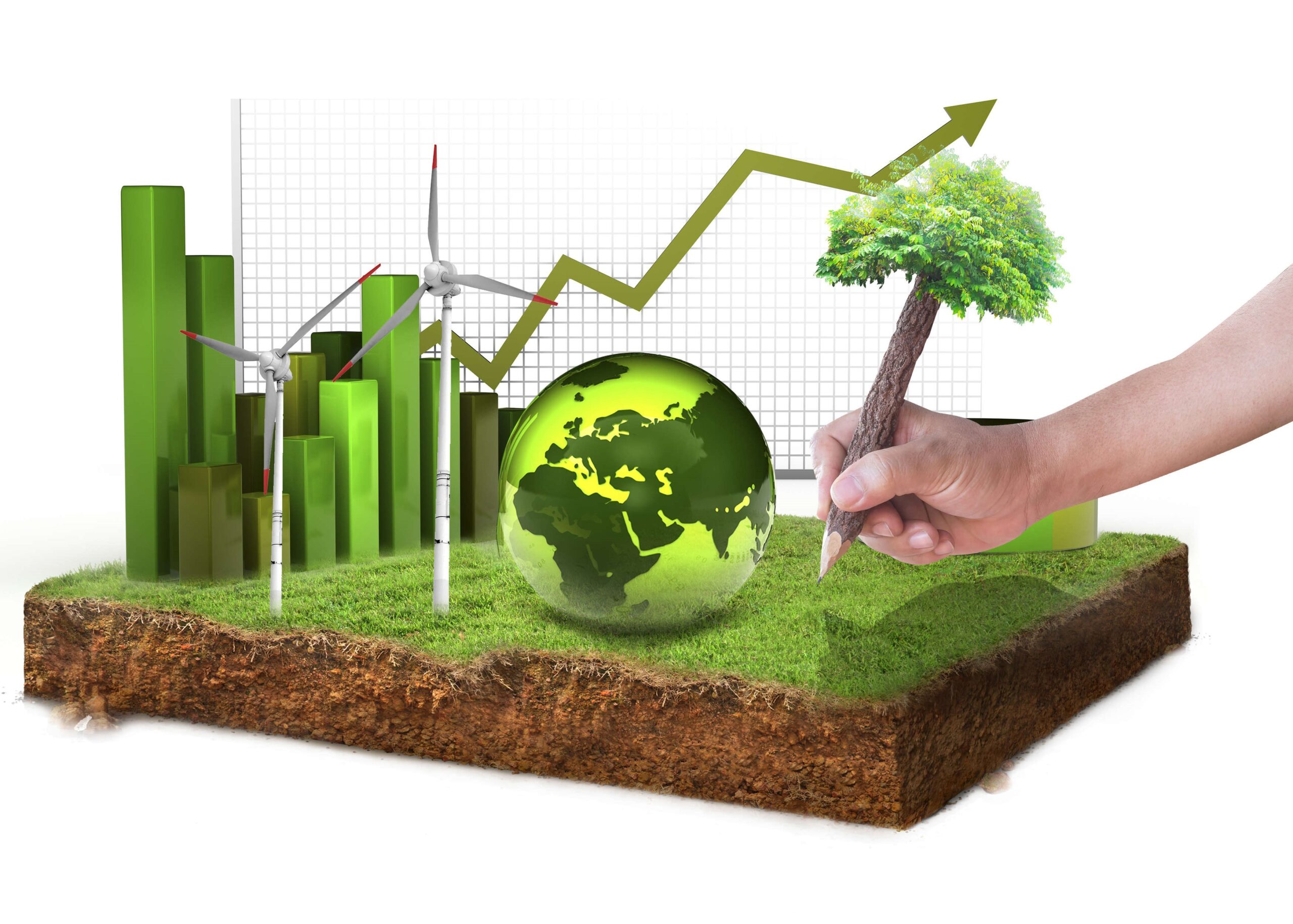
The Rise of Sustainable & Eco-Friendly Developments
July 7, 2025
The Dominican Republic has a high dependence on fossil fuels but has set a clear goal to increase its energy independence and reduce fossil fuel imports. Historically, the country has been particularly reliant on natural gas, coal, and fuel oil. According to energy and environmental consultant Marvin Fernández, in 2023, 85% of the DR’s energy came from fossil fuels, while only 15% came from renewable sources — hydropower at 4.8%, wind at 4.7%, solar at 4.6%, and biomass at 0.9%.
The Dominican Republic is experiencing a surge in sustainable and eco-friendly developments, particularly in tourism. This includes solar-powered resorts, green buildings, and initiatives focused on water conservation and the use of local, sustainable materials. The country is actively pursuing renewable energy goals, aiming to derive 25% of its energy from renewable sources by 2025, with a focus on solar, wind, and hydropower. As global awareness of environmental conservation grows, so does the demand for sustainable living options. The Dominican Republic is embracing this trend, with developers and homeowners prioritizing properties that integrate renewable energy sources, sustainable materials, and energy-efficient designs. This shift represents a win-win for both the environment and investors, offering lower operating costs and enhanced market value.
Eco-friendly or sustainable real estate involves properties designed to minimize environmental impact. This includes the use of renewable energy — solar panels, wind turbines, and other renewable sources — to reduce reliance on fossil fuels. Sustainable materials — recycled wood, bamboo, and non-toxic paints — are used to construct homes with minimal carbon footprints. Achieving energy efficiency through insulated windows, energy-efficient lighting, and water-saving fixtures lower utility costs and waste. Going for green spaces, rooftop gardens, native landscaping, and organic gardens enhance air quality and biodiversity. In the Dominican Republic, eco-friendly homes are particularly appealing due to the country’s abundant natural resources, such as sunshine for solar energy and rainwater for harvesting systems.
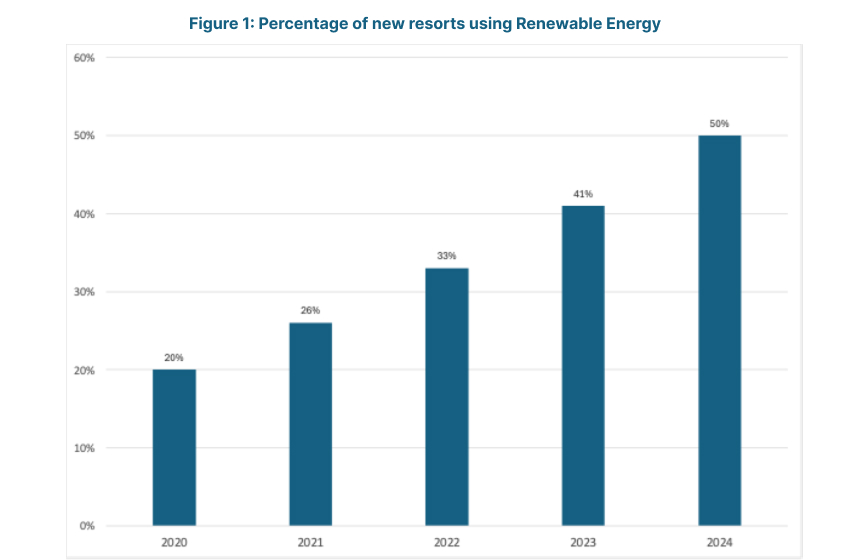
The percentage of new resorts using renewable energy has more than doubled from 2020 to 2024, reflecting the country’s commitment to sustainable tourism and clean energy.
Reasons for choosing Eco-Friendly Real Estate are:
- Long-Term Cost Savings: Eco-friendly homes might require a higher initial investment, but they offer substantial long-term savings. Solar energy systems, for instance, reduce electricity bills significantly, especially in a country with abundant sunshine like the Dominican Republic.
- Growing Tourism Sector: With tourism being a vital part of the Dominican economy, eco-conscious travelers increasingly seek sustainable accommodations. Properties built with eco-friendly practices are more likely to attract high-paying tenants in the vacation rental market.
- Government Incentives: The Dominican government has introduced various incentives to encourage sustainable development, including tax breaks for properties utilizing renewable energy systems.
The most common renewable energy sources used by resorts in the Dominican Republic are:
- Solar Power: Some resorts use biomass boilers or biofuel systems, burning organic materials like wood chips or agricultural waste to produce heat and electricity. This is less common than solar and wind but is used in certain eco-conscious properties.
- Wind Energy: In coastal and windy regions, some resorts utilize wind turbines to supplement their energy supply. While not as widespread as solar, wind energy is an important secondary renewable source for properties located in areas with consistent wind patterns.
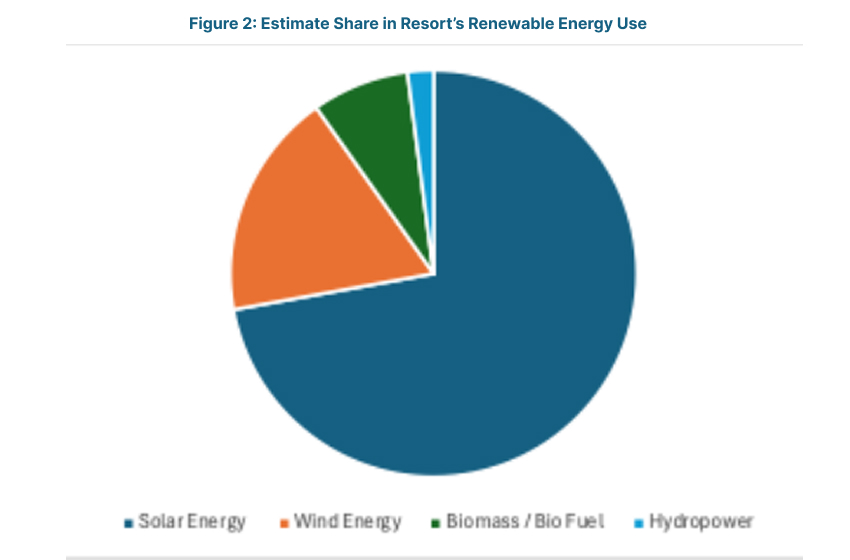
- Biomass and Biofuels: Solar panels are the leading choice for resorts due to the country's abundant sunlight. Resorts use solar photovoltaic systems to generate electricity for lighting, air conditioning, and other operations, as well as solar thermal systems for water heating. Solar installations can cover a significant portion -- sometimes up to 60 -- 70% -- of a resort’s energy needs.Some resorts use biomass boilers or biofuel systems, burning organic materials like wood chips or agricultural waste to produce heat and electricity. This is less common than solar and wind but is used in certain eco-conscious properties.
- Hydropower: Micro-hydropower systems are rare but possible for resorts near rivers or streams, converting flowing water into electricity.
Between 2011 and 2025, at least 17,529 customers in the country have installed rooftop solar panels under the Net Metering Program. In 2020, according to the Dominican government, the electricity generation capacity from renewable sources was 555.5 MW; by the end of 2023, it had increased to 1,126.25 MW, representing a growth of over 103% in three years. The state added that more than 1,300 MW of photovoltaic projects are currently under construction in different regions of the country. There are currently 24 new renewable projects under construction, which will add 1,119 MW to the Dominican Republic’s National Interconnected Electric System. Additionally, the National Energy Commission is processing 27 solar energy projects with a storage capacity of 2,268 MW, which are set to begin construction by 2025. In this energy transition process, no one can be left behind. That’s why, in collaboration with Dominican energy authorities and international cooperation agencies, various rural electrification projects have been developed, including several micro-hydroelectric plants and micro-grids using solar photovoltaic energy with storage for low-income rural communities. The Dominican Republic took its first step to encourage the installation of non-conventional renewable energy projects by creating an attractive regulatory framework for local and international private investment. At a conference last April, Edward Veras, executive director of the National Energy Commission (CNE), stated that the Dominican Republic is on track to achieve 21% renewable energy by the end of 2024, with a goal of reaching 25% by 2025, and 30% by 2030.
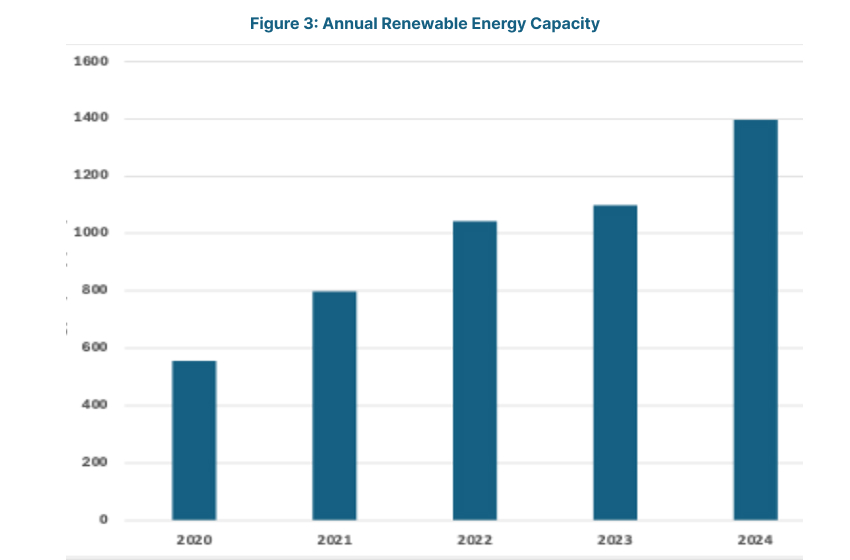
In 2020, the country had 555.5 MW of installed renewable capacity, primarily from solar, wind, and hydro sources. Capacity rose to approximately 799 MW, reflecting new projects and expansions the next year. The figure surpassed 1,040 MW, with significant contributions from wind and hydro installations in 2022. In 2023, installed renewable capacity reached about 1,100 MW, continuing the upward trend. The Dominican Republic closed the year 2024 with 1,396 MW of renewable energy capacity, marking a 150% increase from 2020.
Between 2020 and 2024, the Dominican Republic has witnessed a remarkable expansion of green-certified real estate, led by both public and private sector efforts. More than 300,000 square meters of LEED-certified and eco-compliant buildings have been developed, primarily in the commercial, hospitality, and mixed-use real estate sectors. This growth reflects a broader shift toward climate-resilient infrastructure, energy efficiency, and sustainable urbanization, positioning the country as a green-building leader in the Caribbean.
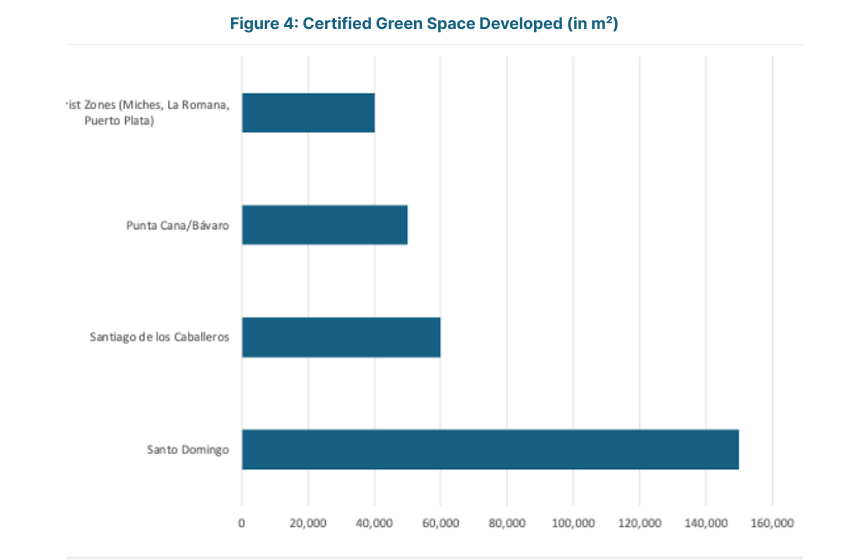
The Dominican Republic’s surge in green-certified construction between 2020 and 2024 — marked by over 300,000 square meters of LEED and eco-compliant developments — reflects the country’s growing commitment to sustainable urbanization, climate resilience, and energy efficiency. This progress is not only reshaping the built environment in key urban and tourism hubs like Santo Domingo, Santiago, Punta Cana, and Miches, but also positioning the country as a regional leader in sustainable infrastructure. Backed by favorable government policies, rising investor interest in ESG-compliant assets, and increasing awareness among developers and end-users, green buildings are becoming more than a trend — they are a new standard. The environmental gains in reduced emissions and water consumption are matched by economic benefits such as lower operating costs, higher rental premiums, and the creation of green jobs. As the nation looks ahead to 2030, the Dominican Republic is poised to double its certified green space, integrate smart technologies into urban development, and attract even greater levels of sustainable investment. This transformation not only supports the country’s climate goals but also enhances its competitiveness as a modern, resilient, and livable destination for both residents and global investors.

